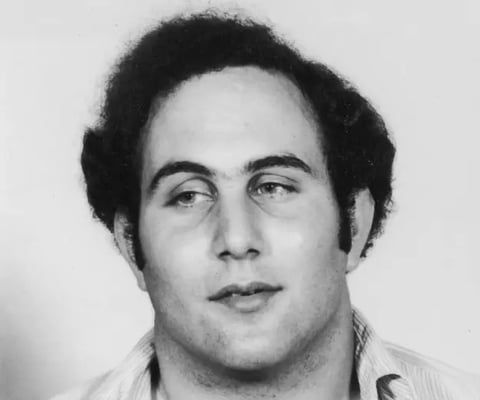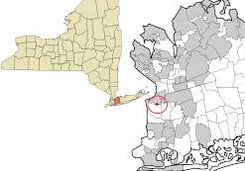

David Berkowitz
6/1/1953 -
Early Life:
David Richard Berkowitz was born Richard David Falco on June 1, 1953, in Brooklyn, New York. His biological parents, Betty Broder and Joseph Kleinman, were both married to other people and had an extramarital affair. To avoid scandal, they put him up for adoption.
Within days of his birth, he was adopted by Nathan and Pearl Berkowitz, a middle-aged Jewish couple living in the Bronx. Nathan worked as a hardware store manager, and Pearl was a homemaker. They renamed him David Richard Berkowitz.
David's early life was relatively uneventful. He was described as a bright but troubled child. Despite an average IQ, he struggled academically and was known to be hyperactive and difficult to manage. His adoptive mother, Pearl, was particularly close to him, and her death from breast cancer in 1967, when David was just 14 years old, deeply affected him. This event marked the beginning of a downward spiral for David.
Adolescence and Early Adulthood:
After Pearl's death, Nathan remarried, but David's relationship with his stepmother was strained. He became increasingly isolated, struggling with feelings of abandonment and rejection. Despite these challenges, he managed to graduate from Christopher Columbus High School in 1971.
After high school, Berkowitz joined the U.S. Army & served at Fort Knox in the U.S. & with an infantry division in South Korea. His time in the military provided structure, but he continued to struggle with mental health issues. He was honorably discharged in 1974 and returned to New York City. Upon his return to civilian life, Berkowitz's mental health deteriorated rapidly. He began to hear voices, which he later claimed were commands from a demon. These voices instructed him to commit violent acts, and he felt increasingly compelled to obey them. It was also at this time that David located his birth mother, Betty.
Elliot Leyton, a forensic anthropologist described Berkowitz's discovery of his birth details as the "primary crisis" of his life, a revelation that shattered his sense of identity.
In 1976, he went to work as a driver for the Co-Op City Taxi Company. He eventually found work as a letter sorter for the U.S. Postal Service and moved into a small apartment in Yonkers.
The "Son of Sam" Murders:
Between 1976 and 1977, Berkowitz embarked on a killing spree that would earn him the nickname "Son of Sam." He targeted young women and couples sitting in parked cars, often using a .44 caliber Bulldog revolver. His attacks were random and brutal, leaving New York City in a state of panic.
The Victims:
Donna Lauria and Jody Valenti - On July 29, 1976, at approximately 1:10 a.m. Berkowitz shot and killed Donna Lauria, 18, who was struck by one bullet which killed her instantly and seriously wounded her friend Jody Valenti, 19, as they sat in Valenti's car in the Pelham Bay neighborhood of the Bronx.
Carl Denaro and Rosemary Keenan - On October 23, 1976, a shooting occurred in a secluded residential area of Flushing, Queens, next to Bowne Park. Berkowitz shot a Citibank security guard named Carl Denaro, 20, and a Queens College student, named Rosemary Keenan, 18, in Queens. They were sitting in Keenan's parked car when the windows suddenly shattered. Both survived, but Denaro suffered a skull fracture. Police determined that the bullets embedded in Keenan's car were .44 caliber, but they were so deformed that they thought it unlikely that they could ever be linked to a particular weapon.
High school students Donna DeMasi and Joanne Lomino - Shortly after midnight, on November 26, 1976, Berkowitz, dressed in military fatigues attacked Donna DeMasi, 16, and Joanne Lomino, 18, in Floral Park. DeMasi wasshot in the neck, but the wound was not life-threatening. Lomino was hit in the back and hospitalized in serious condition she was ultimately rendered paraplegic.
Christine Freund and John Diel - At approximately 12:40 a.m. January 30, 1977, he shot secretary Christine Freund, 26, and John Diel, 30, who were sitting in Diel's car near the Forest Hills LIRR station in Queens. Three gunshots penetrated the car. In a panic, Diel drove away for help. He sustained minor superficial injuries, but Freund was shot twice and died several hours later at the hospital. Neither victim had seen their attacker.
Virginia Voskerichian - On March 8, 1977, at approximately 7:30 p.m. Berkowitz killed Columbia University student Virginia Voskerichian, 20, as she walked home from school in Queens. She was confronted by an armed man and in an attempt to defend herself, she lifted her textbooks between herself and her killer, but the makeshift shield didn't work & the bullet struck her head and he ultimately killed her.
Valentina Suriani and Alexander Esau - At approximately 3:00 a.m. April 17, 1977, he killed Lehman College student Valentina Suriani, 18, and tow truck operator, Alexander Esau, 20, as they sat in their car in the Bronx. A resident of a nearby building heard four shots and called the police. Police said that the weapon used for the crime was the same as the one which they had suspected in the earlier shootings.
Salvatore Lupo (20) and Judy Placido (17) - Right around 3:00 a.m. on June 26, 1977, a mechanic's helper, Salvatore Lupo, 20 and Judy Placido, 17, a recent high school graduate were sitting in Lupo's parked car when three gunshots blasted through the vehicle. Lupo was wounded in the right forearm, while Placido was shot in the right temple, shoulder, and back of the neck; both victims survived their injuries. Lupo told police that they had been discussing the Son of Sam case only moments before the shooting. Neither Lupo nor Placido had seen their attacker, but two witnesses reported a tall, dark-haired man in a leisure suit fleeing from the area; one claimed to see him leave in a car and even supplied a partial license plate number.
Stacy Moskowitz and Robert Violante - On July 31, 1977, Berkowitz shot Stacy Moskowitz, 20, and Robert Violante, 20, in Brooklyn. Moskowitz died, and Violante was blinded in one eye.
The Letters:
Berkowitz taunted the police and the media with a series of letters. He dubbed himself the "Son of Sam," claiming to be a servant of a demonic entity named "Sam." These letters were filled with bizarre and rambling statements, contributing to the public's fear and confusion.
Capture and Trial:
Berkowitz's reign of terror ended on August 10, 1977, when he was arrested outside his Yonkers apartment. A parking ticket issued near one of the crime scenes led police to his car, where they found a rifle, maps of the crime scenes, and a letter to a police officer.
During his interrogation, Berkowitz confessed to the murders, claiming his neighbor's dog, Harvey, was possessed by a demon and commanded him to kill. His trial began on May 8, 1978. Despite his claims of insanity, Berkowitz was found competent to stand trial. He pled guilty to all the shootings and was sentenced to six consecutive life terms in prison.
Incarceration and Later Life:
While in prison, Berkowitz became a born-again Christian, claiming he was no longer the "Son of Sam" but the "Son of Hope." He expressed remorse for his crimes and has maintained a relatively low profile, engaging in ministry work and counseling fellow inmates.
Berkowitz has been denied parole multiple times and remains incarcerated at Shawangunk Correctional Facility in New York.
Cultural Impact:
The "Son of Sam" case had a profound impact on American culture. It inspired numerous books, documentaries, and movies, including Spike Lee's film "Summer of Sam." The case also led to the implementation of the "Son of Sam" laws, designed to prevent criminals from profiting from the publicity of their crimes through book deals or movie rights.


Pelham Bay Area


